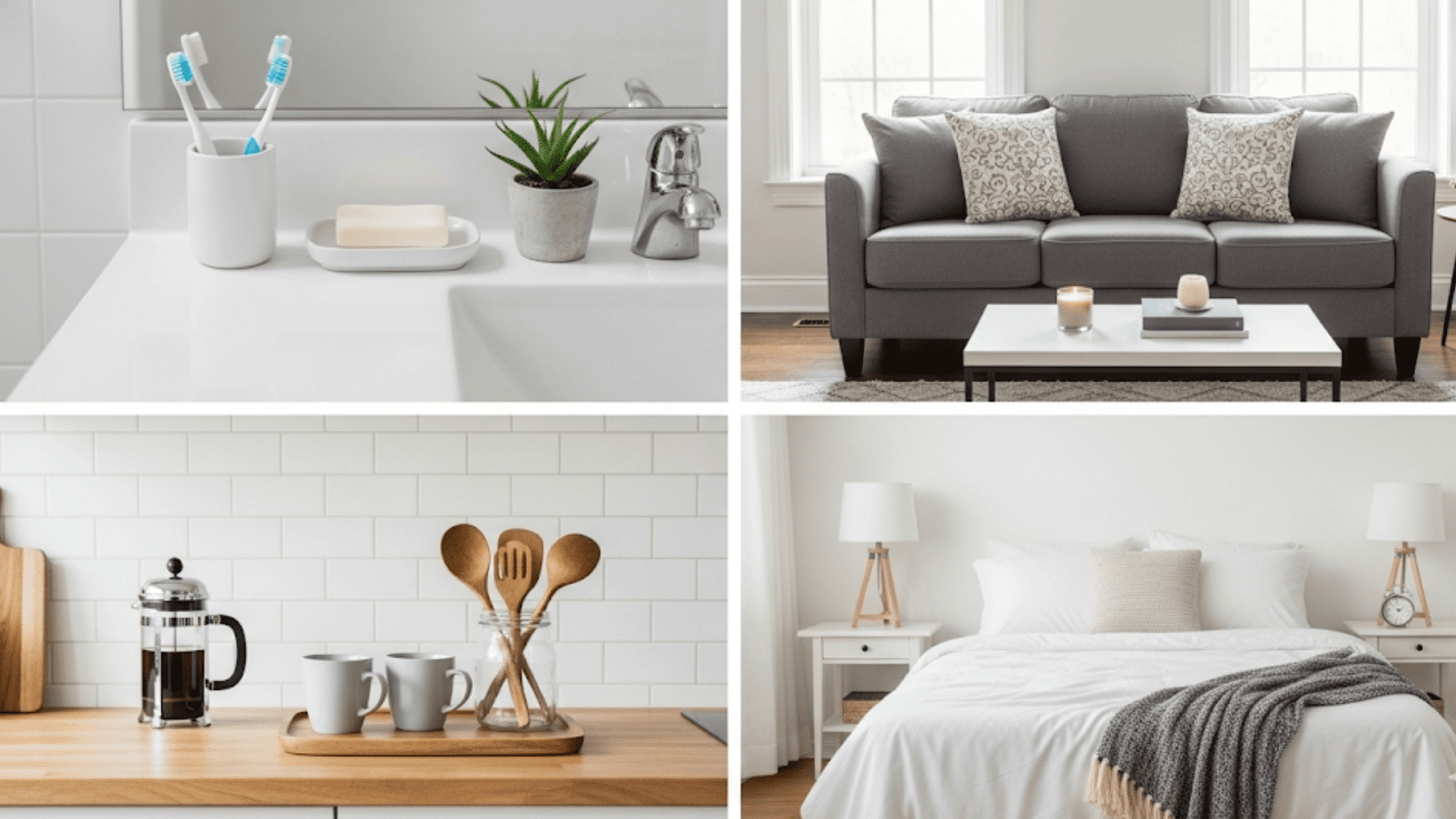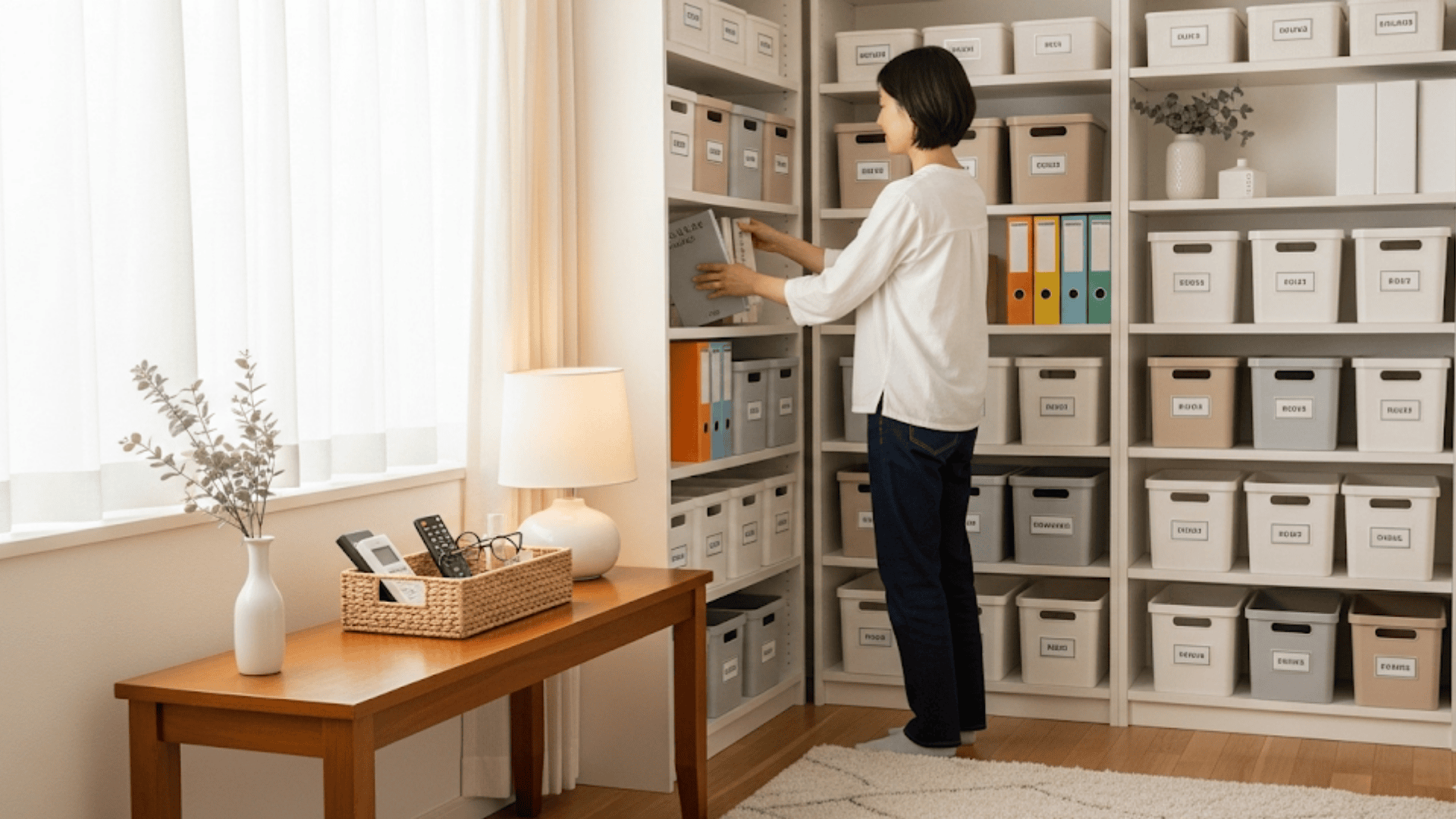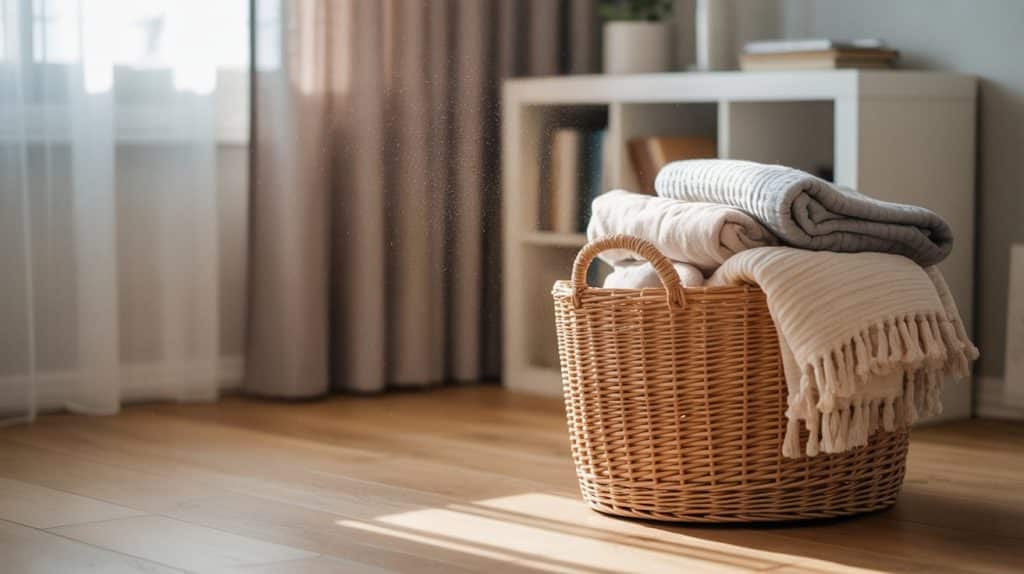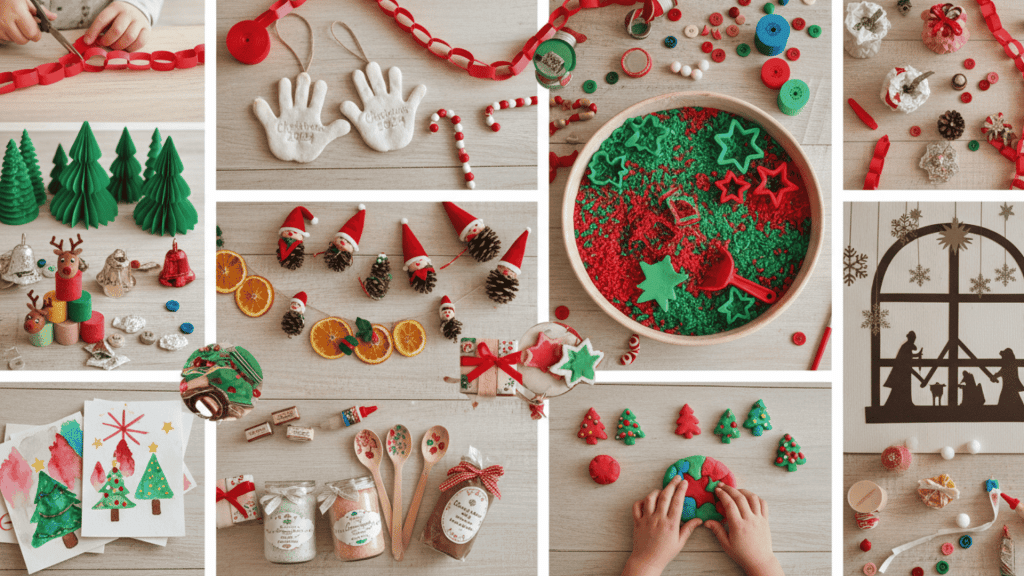Do you walk into your living room and feel overwhelmed by the stuff everywhere? You’re not alone. Most people struggle with clutter that builds up over time.
Here’s the good news: You can turn your cluttered space into an organized, peaceful home without feeling overwhelmed. The secret is breaking it down into simple, manageable steps.
In this blog, I’ll guide you through a step-by-step process for decluttering your home using proven methods.
You’ll learn which rooms to start with, what to keep, what to toss, and how to stay organized.
By the end, you’ll have a clear plan to change any messy space into a calm area you actually enjoy. Let’s get started.
What to Think Before You Start Decluttering?
Before you touch a single item, prepare yourself mentally. Decluttering isn’t about getting rid of everything you own. It’s about keeping things that add value to your life.
Set realistic goals for each session. Don’t try to declutter your entire house in one weekend. Instead, plan to spend 30-60 minutes per room. This prevents burnout and helps you make better decisions.
Key mindset tips:
- Focus on progress, not perfection
- Remember why you’re doing this (less stress, more space)
- Celebrate small wins along the way
- Don’t rush the process
The 4-Box Method: Your Decluttering System
This simple system works for every room. Pick up each item and ask:
- Keep Box: Do I use this regularly? Does it make me happy?
- Donate Box: Is this in good condition, but not useful to me?
- Sell Box: Is this valuable enough to sell online or at a yard sale?
- Trash Box: Is this broken, expired, or beyond repair?
Pro tip: If you can’t decide about an item in 10 seconds, put it in a “maybe” pile. Come back to it after finishing the room.
Room-by-Room Decluttering Strategy

Now that you have your supplies and system ready, let’s tackle each room with a clear plan.
1. Start Small: Bathroom or Closet
These rooms have clear categories of items, making decisions easier. You can quickly spot expired products, old makeup, or clothing that no longer fits. Start here to build confidence before tackling bigger spaces.
Bathroom decluttering steps:
- Check expiration dates on all products. Most people keep skincare and makeup way past their prime. Toss anything that’s expired, dried out, or changed color.
- Toss dried-up nail polish and old makeup. If your mascara is clumpy or your foundation has separated, it’s time to go. Keep only products you actually use regularly.
- Keep only the towels you actually use. Three sets per person is plenty – one in use, one in the wash, one as backup. Donate the rest to animal shelters.
- Clear countertops completely. Put daily items in a drawer or cabinet. Clean surfaces make the whole bathroom feel bigger and more organized.
Closet decluttering steps:
- Try the hanger trick. Turn all hangers backward, then turn them forward after wearing items. After six months, donate clothes on hangers that are backward.
- Donate clothes that don’t fit your current size. Keep clothes that fit you now, not the size you hope to be in the future. You’ll feel better wearing things that actually fit.
- Keep only shoes you’ve worn in the past year. If they’re uncomfortable or you’ve forgotten you own them, let them go. Quality over quantity is often the best approach for shoes.
- Store seasonal items elsewhere. Move winter coats out of your main closet during summer. Use under-bed storage or a hall closet for off-season items.
2. Tackle High-Traffic Areas: Living Room
The living room sees the most daily use, so clutter builds up fast here. Start with surfaces like coffee tables and side tables since they’re visible to guests. Focus on items that actually belong in this space and serve a real purpose.
Ask yourself:
- Does this item belong in this room? Remote controls and phone chargers belong here, but kitchen utensils don’t. Move misplaced items back to their proper rooms.
- Do we actually use this? That decorative bowl, which just collects dust, can go. Keep items that serve a real purpose in your daily life.
- Is there a better place for it? Mail belongs in a home office or kitchen command center. Find proper homes for displaced items.
Common living room clutter:
- Old magazines and newspapers. Recycle issues older than three months unless they have special meaning. Designate a specific area for your current reading material.
- Broken or unused electronics. Dead remotes, tangled cords, and unused devices take up valuable space. Recycle electronics properly at local drop-off centers.
- Too many throw pillows. If you move pillows every time you sit down, you have too many. Keep 2-4 pillows maximum for comfort and style.
- Books you’ll never read again. Keep your favorites and reference books, but consider donating novels you’ve finished. Someone else will enjoy them more than you will.
3. Kitchen: Focus on Function
Kitchens collect clutter because they’re used multiple times daily for cooking, eating, and storage. Focus on keeping countertops clear, except for items you use daily. Check cabinets for expired food and gadgets you never actually use.
- Countertops: Keep only daily-use items visible. Store all other items in cabinets or drawers.
- Cabinets: Check for expired food, duplicate gadgets, and chipped dishes.
- Refrigerator: Clean out old food on a weekly basis. Use clear containers to see what you have.
4. Bedroom: Create a Peaceful Space
Your bedroom should be a calm retreat, but it often becomes a cluttered space for clothes and miscellaneous items. Remove anything related to work or exercise, as these can create mental stress. Focus on making this space feel restful and clutter-free.
Focus on these areas:
- Under the bed (often a dumping ground)
- Nightstand drawers
- Dresser surfaces
- Closet floor
How to Stay Organized After Decluttering

Set up simple systems that are easy to maintain:
The One-Minute Rule: If something takes less than one minute to put away, do it immediately. This prevents small messes from becoming big problems.
Weekly 15-Minute Pickup: Spend 15 minutes each week doing a quick declutter. Walk through each room and put things back where they belong.
The One-In-One-Out Rule: When you bring something new into your home, remove something else to maintain balance. Buy a new shirt? Donate an old one.
Monthly Check-ins: Conduct a brief review of each room once a month. Ask yourself:
- What’s accumulating again?
- Which systems aren’t working?
- What needs adjustment?
Common Decluttering Mistakes to Avoid
Don’t start with sentimental items like photos and keepsakes; save those for last when you’re more experienced at making quick decisions.
Avoid buying organizing products before you declutter, since you won’t know what storage you actually need until you see what you’re keeping. Never work when you’re tired or stressed, as you’ll make poor choices you’ll regret later.
Most importantly, don’t try to finish everything in one day; take breaks and pace yourself to avoid burnout and hasty decisions.
Closing Remarks
Learning how to declutter your home step by step doesn’t have to be overwhelming. Start small with one room, use the 4-box method, and focus on keeping items that truly add value to your life.
Remember the key points: Begin with easier spaces, like bathrooms, and work room by room. Set up simple systems to stay organized.
The goal isn’t perfection, it’s creating a space that feels calm and functional for your family.
Most importantly, be patient with yourself. Decluttering is a skill that gets easier with practice. Every item you remove makes your home more peaceful and manageable.
Which room will you start decluttering first? Share your biggest clutter challenge in the comments below. I’d love to help you tackle it!





































